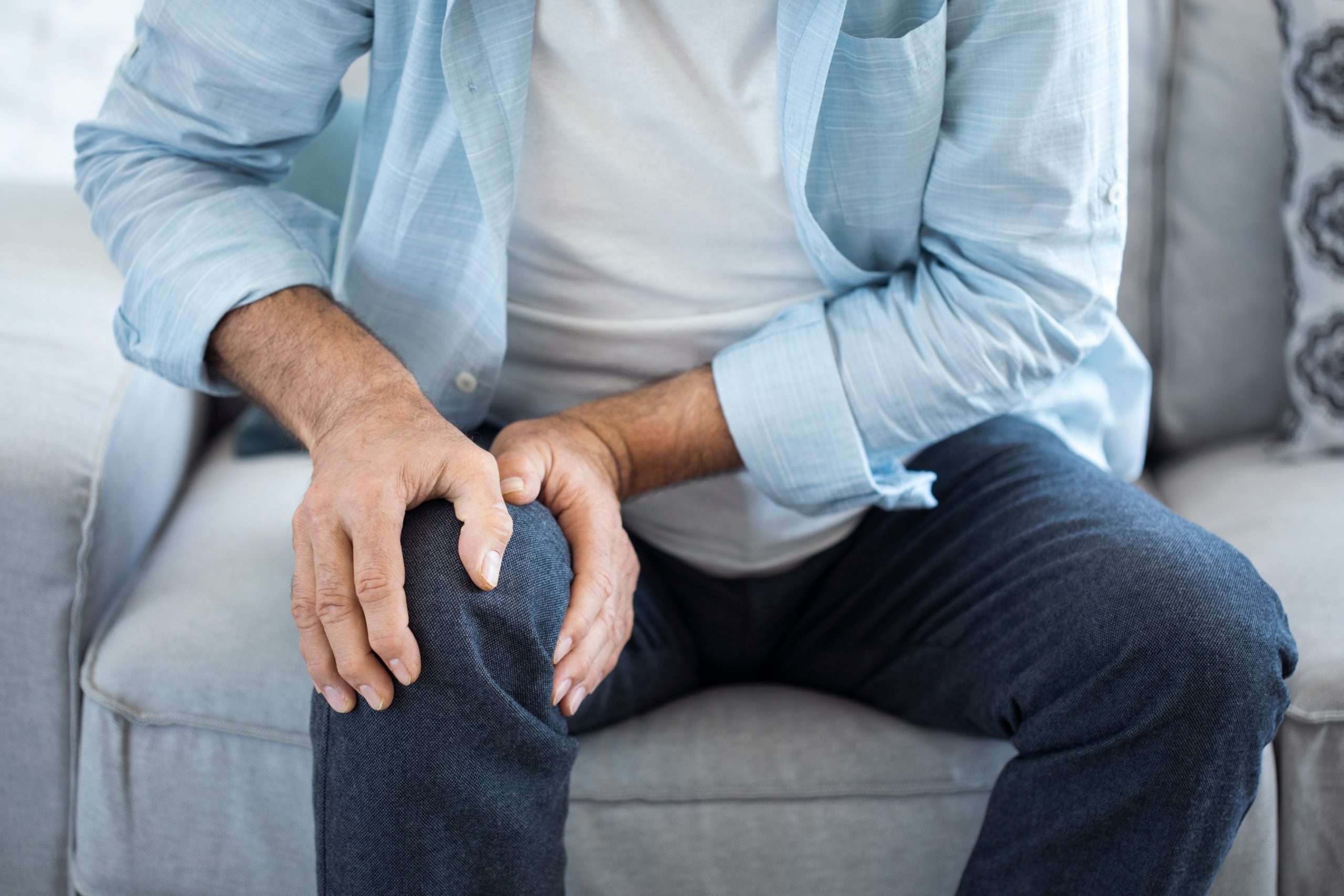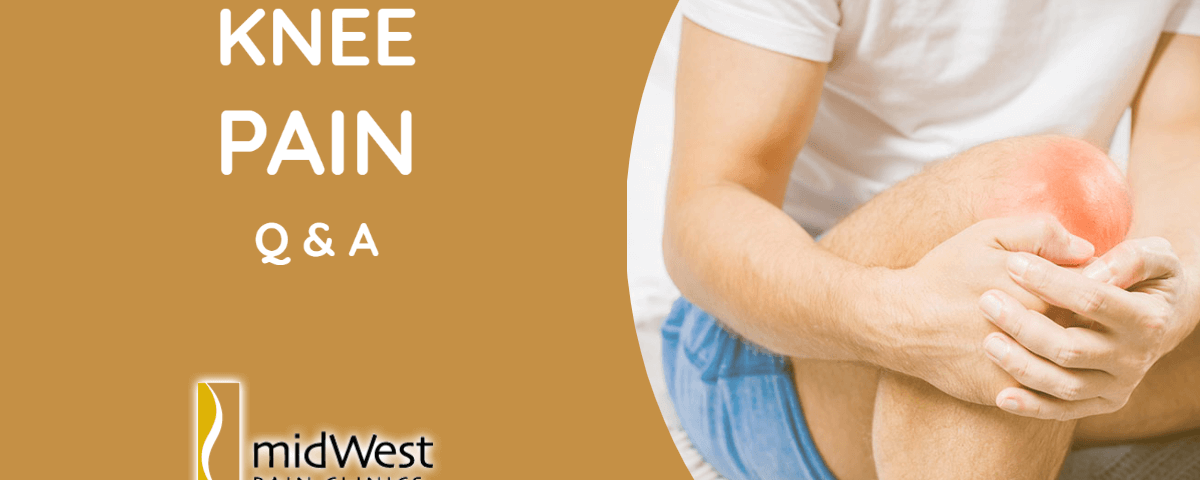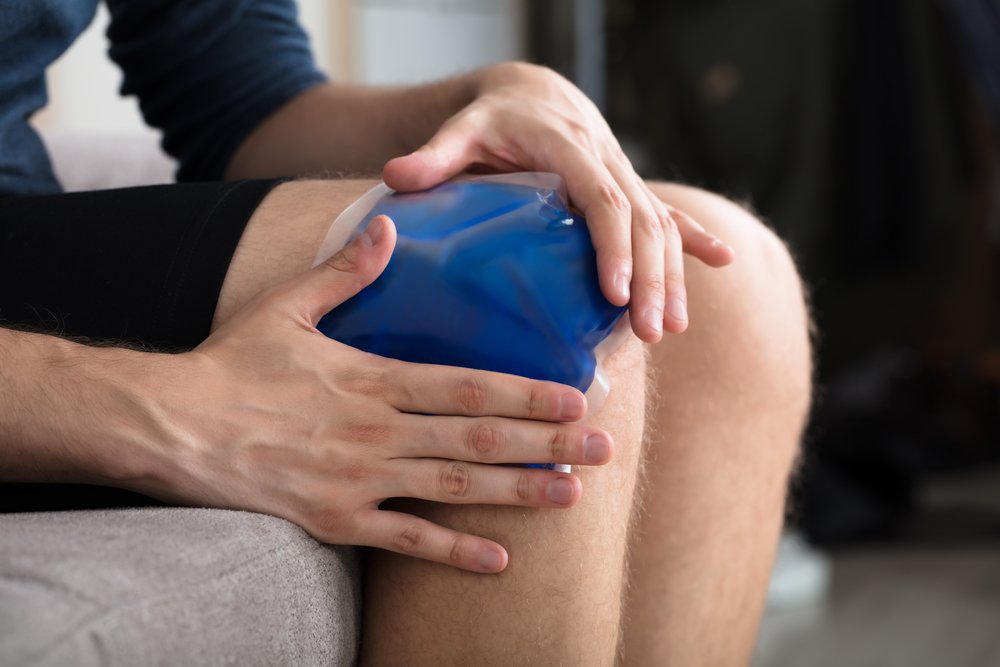How Did You Hurt Your Knee
Traumatic injuriesare noticeable right away and worsen dramatically the next day as pain and inflammation set in. traumatic injuries typically occur playing sports, during slips, falls, and other work-related accidents. The trauma is caused by the injury exceeding the tolerance of knee structures leading to breaks, ruptures or tears.
Knee ligaments, bones, and menisci are the most commonly damaged structures in the knee joint. Injuries to bone and connective tissue result in long term pain and will impede normal knee function for some time after the initial injury. Less serious traumatic injuries may result in only painful, superficial contusions which heal relatively quickly. If you believe you have incurred serious knee trauma you should visit a doctor as soon as possible. If bone or connective tissue within your joint is damaged a surgical assessment could be required.
Overuse injuriestypically cause knee pain that comes and goes and varies in intensity. Sometimes our favorite activities subject our knees to stressful movement patterns repetitively. Think jumping, squatting, kneeling, running, lunging type movements. Moving in this way over and over again can irritate knee structures such as bursae, tendons, and articular cartilage.
Degenerative Joint Disease is the number one cause of long term disability relating to knee pain. Pain often comes on slowly and over time those affected by arthritis will experience constant pain while performing weight-bearing activities.
How Long Does Pain Behind The Knee Takes To Resolve
How long the pain behind your knees will take to resolve depends on the cause of the knee pain, its severity, treatment, and your overall health.
However, 6 to 12 weeks is generally a good timetable for conservative methods .
Knee surgeries will take longer to fully recovery and could take anywhere from 8 weeks to 12 months.
Tips To Go Up And Down Stairs With Less Pain
You May Like: Can I Regrow Cartilage In My Knee
Years Of Wear And Tear Can Take A Toll On Your Knees But There Are Strategies To Relieve Pain
Whether it’s a sharp pain or a dull ache, knee pain is a common problem in women particularly older women. One study of women ages 50 and older, published in Arthritis & Rheumatism, found that nearly two-thirds had some type of knee pain during the 12-year study period.
Dr. Rebecca Breslow, a sports medicine doctor and an instructor in orthopedic surgery at Harvard Medical School, says many of the active older women and the female athletes she sees in her practice have knee pain. While there are numerous pain-inducing knee conditions, three seem to be the most common culprits in older women:
-
patellofemoral pain
Below is a guide on how to recognize these conditions and how to treat them.
Treating Knee Pain When Bending

The best treatment for knee pain when bending will depend on the underlying cause of your knee pain. In most cases it will involve:
You will find loads more information on the different conditions we have looked at including the best ways to treat knee pain when bending by using the links above.Here we have looked at the most common causes of knee pain when bending, but almost any problem with the knee can result in pain as you move it. If none of these is sounding quite right, visit the knee pain diagnosis section for more help work out what is causing your bending knee pain.
Read Also: Medicare Coverage Knee Replacement
What’s The Outlook For Teenagers With Pain In Their Knees
Most knee pain in teenagers can be managed with simple treatments. However, many soft-tissue tears and bone breaks require surgery. Most teenagers recover without long-term problems if they follow the recover plan provided by their healthcare providers. Because there are many causes of knee pain, be sure to ask your healthcare provider for specific information on long-term prognosis for your teen’s knee condition.
Can You Prevent Knee Problems
Not all knee problems are avoidable, but you can lessen your chance of problems by participating in regular strength training. To protect your knees, it’s important to have a very strong core and strong legs, says Dr. Rebecca Breslow, an instructor in orthopedic surgery at Harvard Medical School. Make an effort to perform strength training at least twice a week. In addition, work on increasing joint flexibility, which can also help you head off an injury.
Read Also: What Do You Do For Water On The Knee
Pain At The Knee When Bending Or Straightening The Leg
Feeling pain while straightening or bending your knee may be familiar to some people. However, I suggest that you address the problem before it gets worse. The problem may start suddenly, maybe after an injury, or it may develop over time, depending on the cause.
Note that some conditions may cause pain when you bend your knee only, while others may cause pain when you bend and straighten. Today we look at a condition that causes pain when you bend and straighten your knee.
Why My Knee Hurts When I Bend It And Straighten It
Sometimes I wonder why my knee hurts when I bend it and straighten it. Many people say that this condition usually occurs in people who are sedentary, or who spends most of their time seated. However, I live an active lifestyle so the reason as to why my knee hurts when I bend it and straighten it, still remains a mystery to me. This condition bothered me so much, but not enough to convince me to go and see a doctor. So, I decided to research online and found out a variety of reasons that could possibly explain why my knee hurts when I bend it and straighten it.
Among the various reasons I found online, what intrigued me was the so-called Runners knee. Its a condition that commonly affects runners or athletes, as its name suggests. However, this condition can also affect ordinary people. Whenever you have a runners knee, it makes you have difficulty in walking, sitting, standing, and even bending your knee. This condition will surely make you feel frustrated, especially if you are fond of doing the said activities.
You May Like: How Soon Can I Shower After Knee Replacement Surgery
Other Causes Of Knee Pain When Bending
Other less common causes of knee pain when bending include:
How Can I Prevent Knee Pain
Although you canât prevent all injuries, you can take these steps to make them less likely.
- Stop exercising if you feel pain in your knee.
- If you want to make your workout more intense, always do it gradually.
- Stretch your legs before and after physical activity.
- Use kneepads to prevent bursitis, especially if you have to kneel a lot.
- Wear shoes that fit well and offer enough support.
- Keep your thigh muscles strong with regular stretching and strengthening.
- If youâre overweight, work to drop some pounds so thereâs less stress on all of your joints, including your knees.
Also Check: How To Lighten Your Knees Overnight
Exercises To Reduce Knee Pain When Bending
Isometric exercises are a type of exercise where you activate your muscles without moving your joints. Dr. Jennifer Reed wrote in The Principles of Sports Rehabilitation, that isometric exercises can help strengthen your knees without putting too much strain on the joint itself. The following are three isometric options to try at home:
Muscles Weak And Strong

Maintaining flexible muscles around your knee that are strong enough to support your body may help to alleviate or prevent tightness in the knee area. Strong legs, hips, and buttocks are thought to reduce knee tightness.
Research surrounding the benefits of strong leg muscles in relation to knee tightness varies. According to a 2010 study that looked at over 2,000 knees of men and women who had or were at risk for osteoarthritis, neither hamstring nor quadriceps strength predicted frequent knee symptoms such as pain, aching, and stiffness.
Still, having strong quadriceps may help to reduce the risk of knee problems, since stronger muscles can help to support the knee joint.
A 2014 study that was conducted over five years with 2,404 participants who also had or were at risk for osteoarthritis, found that weak quadriceps were associated with an increased risk of worsening knee pain in women but not in men. Researchers acknowledged that their longer study built on similar studies of shorter duration , and smaller group sizes, to support the link between leg muscle strength and knee pain. Their study suggests there may also be sex-specific differences in risk factors for worsening knee pain.
Don’t Miss: How To Stop Limping After Knee Surgery
How To Prevent Knee Pain When Bending
Before you begin having serious problems with your knees, there are prevention tips to incorporate into your daily living.
- Strengthen knee muscles with exercises for the thighs
- Always stretch before and after a workout or exercise routine
- Do strength training exercises for your back and abdominal muscles
- Use proper posture when performing tasks, sitting, standing, and walking
- If standing for prolong periods, shift weight from one foot to the other or alternate feet using a foot rest
- Avoid placing strain on knees with bending or squatting by using proper techniques
- Follow a healthy diet to maintain good health of the muscles
Having knee pain when bending can limit your daily activities and may lead to further complications. Our knees allow us to move in many ways, and we depend on the proper functioning of the knees many components. An injury or disease to any part of the knee can be debilitating. Good health and strengthening exercises for the knee joint and its connecting partners are key to maintaining pain-free movement.
Also read:
Anterior Knee Pain In Middle
- Osteoarthritis : Arthritis of the patella causes pain because the cartilage under the kneecap is thinning. Arthritis, which only involves the patella in your knee, is more common in women. Physical therapy can be very effective in the early stages of osteoarthritis of the patella. Injections and over the counter medications may have a role in some patients. In some situations, when the arthritis is severe, a patient will need to consider a tibial tubercle osteotomy, replacement of the patella, or a total knee replacement if the arthritis is elsewhere within the knee.
Also Check: How To Get Rid Of Fat Around Knees
Getting Rid Of Your Knee Pain
If you are lucky, your knee pain may get better on its own with rest. However, more than likely you will need to engage in rehab exercises to overcome the injury. Physiotherapists specialize in providing specific exercises and treatment regimes that increase the strength, stability, and mobility of your joint.
How Does The Knee Bend
The knee is a hinge joint, which means its main movement is bending and straightening . As the knee moves, a number of things are happening:
Muscles: They work in pairs with one relaxing and the other contracting to allow the movement e.g. to bend your knee you hamstrings contract and you quads relax
Bones: The femur and tibia have to roll, glide and spin to move smoothly. The patella shifts, tilts and rotates as it glides up and down through a groove on the thigh bone the position and movement of the patella is controlled by the surrounding muscle.
Cartilage: The special shock-absorbing cartilage that lines the knee moves and changes shape slightly to prevent it from getting trapped
Ligaments: These help control the movement and maintain stability by preventing excessive movement of the bones. There are two pairs of ligaments, the cruciate ligaments in the middle of the joint, and the collateral ligaments on either side
These structures all need to work together properly to allow for smooth, pain-free knee bending and straightening. Problems in any of these areas can lead to knee pain when bending. For example, if there is muscle weakness or ligament instability, the bones may move slightly out of position causing them to catch or grind on other structures in the knee.
Related Articles
Don’t Miss: Nano Knee Surgery Cost
Pain In The Front Of The Knee: 6 Common Causes
Pain in the front of the knee or anterior knee pain is very common. Do any of these scenarios seem familiar to you? You come to a stairway and cringe at the thought of having to walk downstairs. You love to run, but the anterior knee pain you have when running downhill has taken the joy out of running. If youve been sitting for a while, the thought of having to get up is becoming too much to bear. While I could say youre not alone, thats not very comforting. You are here for answers. Lets see how we can help educate you on why the front of your knee hurts so much.
How Do You Treat Anterior Knee Pain
Pain in the front of the knee is usually treated successfully without surgery. This may take some time. It is not unusual for the pain to last for many months. Many of you will respond to physical therapy, which should focus on your hips, yes, your hips and pelvic muscles as much as it focuses on your thigh muscles. Runners who focus on a strengthening program might repeat might have a lower incidence of anterior knee pain.
You May Like: How To Reduce Swelling After Total Knee Replacement
When Should I Get My Teens Knee Pain Evaluated By A Healthcare Provider
Make an appointment to see your healthcare provider if:
- Your teens pain has lasted longer than two weeks or anytime theres an increase in pain level.
- Your teens knee is red, swollen or warm to the touch.
- Your teen cant put weight on their leg they limp.
- Your teens knee locks and cant move.
- Your teens kneecap feels like it slides out of place or the knee looks twisted.
- Your teen has knee pain during or after activity.
- Theres painful popping or clicking sound in your teens knee.
- Your teens knee doesnt have strength or full range of motion.
- Your teens pain wakes them up at night.
Last reviewed by a Cleveland Clinic medical professional on 04/30/2021.
References
Can Knee Pain In Teens Be Prevented

Most knee pain that is caused by injury or overuse can be prevented with some attention and work by your teen, including:
- Make sure your teen wears proper shoes for the activity/sport and wears knee pads and leg guards . Replace worn out footwear and gear.
- Engage in muscle strength training exercises. Check with a trainer to make sure proper form and body alignment are being followed. Always do warm up and cool down exercises before and after workouts.
- Keep your muscles flexible by proper stretching exercises or yoga.
- Dont engage in activities that cause or worsen knee pain.
Recommended Reading: How To Whiten Your Knees
Cant Bend Your Knee Without Pain Here Are Five Potential Reasons Why
Whether youre an athlete, someone who works a physical job or a retiree looking to stay active, knee pain can have a severe effect on your ability to function. Since we use our knees to accomplish pretty much any movement, if you cant bend your knee without feeling pain, you might find yourself immobilized quickly. Minor knee problems can usually improve with minimal rest and treatment, but if pain persists for a few days or longer, its time to seek treatment.
To help you better understand the potential causes of your knee pain and be more engaged with the diagnostic and treatment process, were sharing the following guide. If you have any questions or would like to learn more, dont hesitate to reach out.
Torn Anterior Cruciate Ligament
You hear a pop and can’t move after you suddenly change direction — often while playing soccer, football, or basketball. You may have torn your ACL, which connects the femur and the tibia and prevents the tibia from moving too far forward. Your knee will hurt and swell and feel unstable.
You can tear or strain any of the tissues that hold your knee together: Ligaments connect bones to each other tendons connect muscle to bone. Irritated tendons from using them too much? That’s tendinitis.
Don’t Miss: Inversion Table After Hip Replacement